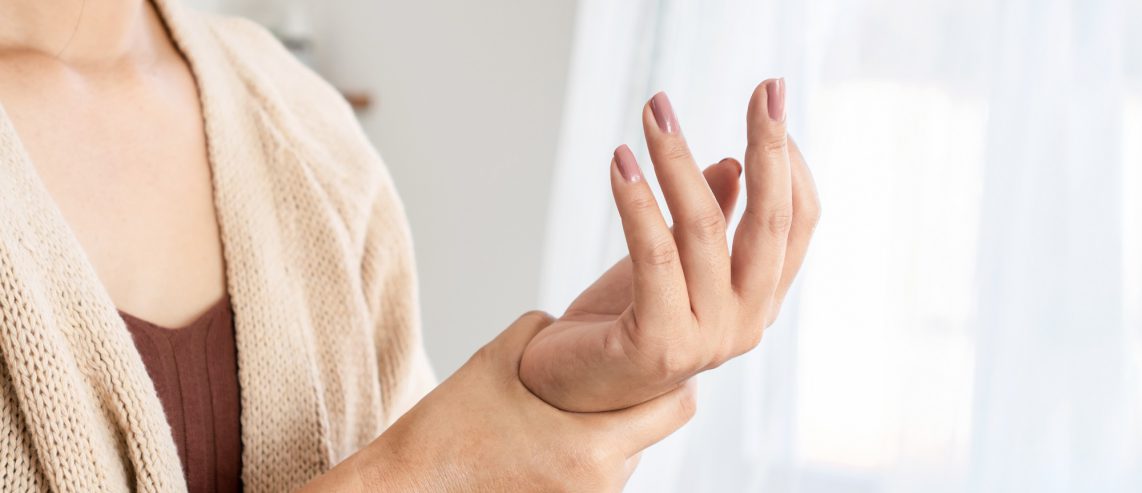Have you ever experienced numbness, pain, or tingling in your hand? Although it may be caused by a temporary injury, ongoing pain and numbness could point to carpal tunnel syndrome. This condition affects approximately 3% to 6% of the adult population and symptoms usually begin gradually without any specific injury.
Never Miss a Beat!
Learn more about the UPMC Centers for Rehab Services in our email newsletter
Thank you for subscribing!
You can now select the specific newsletters you'd like to receive.
You are already subscribed.
Subscribe to more newsletters in our email preference center.
Sorry, an error occurred. Please try again later.
Get Healthy Tips Sent to Your Phone!
What Is Carpal Tunnel Syndrome?
Carpal tunnel syndrome is caused by pressure being placed on the median nerve at the wrist, which controls sensations of the thumb, index, middle fingers, and one half of the ring finger. This can cause numbness of the hand and fingers.
While there is no single cause of carpal tunnel syndrome, certain factors, such as age, gender, heredity, and medical history, can increase the risk for developing this condition. Trauma and repetitive strain on the hands and wrists also can increase the risk for developing carpal tunnel syndrome.
If the symptoms become severe, surgery may be required to relieve pressure on the median nerve. Hand therapy after surgery can help you heal more quickly and achieve optimal function.
How Hand Therapy Can Help
At UPMC Rehabilitation Institute, our specialty-trained hand therapists provide patients with individualized treatment plans that pay special attention to your limitations, personal needs, and goals throughout the entire rehab process.
After carpal tunnel surgery, performing hand therapy exercises can improve nerve healing, increase range of motion and strength, reduce the formation of scar tissue, and decrease swelling.
In the beginning, your therapy may involve soft tissue massage and modalities to combat swelling. Since you may still have stitches, you’ll perform milder exercises that focus on improving your range of motion by bending your fingers; stretching, opening and closing the hand; and moving your wrist. Paraffin wax, whirlpools, massage to push fluids out of the affected area, ultrasound, and electrical stimulation also may be used.
As you advance in your therapy, exercises will focus more on strengthening your hand muscles and stabilizing your joints. You may squeeze and stretch therapeutic putty and do wrist curls with small weights to strengthen your hand. These activities will help with the healing process, increase your ability to perform activities of daily living, enable you to participate in hobbies, and prepare you to return to work. Your therapists also will show you a variety of techniques to help avoid future problems with your hand.
If you are experiencing ongoing numbness, pain, or tingling in your hand, talk to your doctor or occupational therapist about receiving a carpal tunnel syndrome evaluation.
For more information about hand therapy at UPMC Rehabilitation Institute, call 1-888-723-4277.
Editor's Note: This article was originally published on , and was last reviewed on .
About UPMC Rehabilitation Institute
The UPMC Rehabilitation Institute offers inpatient, outpatient, and transitional rehabilitation, as well as outpatient physician services so that care is available to meet the needs of our patients at each phase of the recovery process. Renowned physiatrists from the University of Pittsburgh Department of Physical Medicine and Rehabilitation, as well as highly trained physical, occupational, and speech therapists, provide individualized care in 12 inpatient units within acute care hospitals and over 80 outpatient locations close to home and work.
